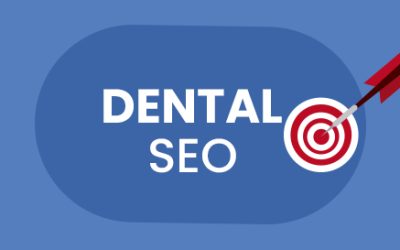Today when someone wants to go to a doctor, they first go online to look for a good doctor, check user reviews and then make an appointment. 73 percent of patients turn to search engines to locate a health practitioner and 89 percent of consumers turn to search engines for healthcare information, according to surveys. Around 55 percent of searchers do not click beyond the first three results on the search engine results page. So, it is important for medical practices and healthcare organizations overall to use innovative medical SEO techniques to optimize their medical websites and build a strong presence online.

People are looking for an online experience that involves less time and offers more convenience. Keeping this in mind, medical websites should be developed in such a way that satisfies the users.
A forbes.com article posted this September attempts to delve into the mind of Google and come up with the right SEO strategies for Google. According to this article, the PRET model should make it easier for website optimizers to optimize their sites for Google.
The PRET Model
Popularity: Find out how popular your website is, the amount of traffic on your website, whether there are other websites that talk about you and your brand, whether other sites are linking to yours, and whether there are social media indicators that prove your popularity. If you are popular, naturally your site will be shown more frequently and higher up in the listings. So backlinks are still important because they give more credit to your website, and the backlinks should be relevant and from high quality domains. Similarly, social media presence and popularity is also important as it helps you to communicate with the patients and other consumers, as well as share and promote your medical business.
Relevance: The next important consideration is relevance. Post relevant content and images that have related themes because Google has image recognition feature now. They should also have related file names and associated tags. Contents with higher word count ranks higher in search engines. Title tags, metadata and URL should have relevant keywords. Relevant content provides what the users are looking for and the best trick is to show your content in such a way that it attracts that users. Most of the content can be shared on social media also, so that it gets you more traffic, increases your authority and ensures better ranking.
Engagement: See whether the users are clicking on the search results listings and also engaging with the linked webpage, whether the user clicks and stays on the content, or whether they hit the back button, which is also known as the bounce rate. Bounce rate refers to the portion of your readers that hit the back button the moment they land on the website. If the bounce rate is high, then it shows that the users don’t like the content. A good user experience ensures a lower bounce rate and engagement is also an important factor in understanding if a webpage is any good to the user. The more convenient and quicker it is for the user, the better.
Trust: Trust is an important factor in healthcare digital marketing. In the case of new websites, they are rarely ranked high unless they are attached to a completely new search term. Trust is essential because if your website appears to be untrustworthy, then it probably will not be worthy of being included in Google’s top search results.
Other Elements to Optimize Your Website
SEO has become more complex than ever which is due to the frequent changes in Google’s algorithm and most people keep basing their SEO strategies on outdated techniques. So here are some other strategies for optimizing your medical website:
- Have mobile optimized websites that are fast and secure: Today people reach out to their mobiles first for searching anything on the internet. The performance and speed of the website is important. Google has openly stated that speed of your site determines your ranking. Tools like W3 Total Cache and CDN like Cloudflare are tools that help to speed up the website’s performance. So medical businesses must have a mobile optimized website. Similarly people look for websites that are quick, fast and secure. If a website take longer than three seconds to load, then users tend to hit the back button and go to other websites. Running Google’s mobile-friendly test on your website is recommended. According to Google, 77 percent of smartphone users used a mobile device to look up local health services in the past six months and 79 percent of smartphone users say they are likely to revisit the mobile optimized website again if it is easy to use.
- Accessible URL: The use of the right kind of URL is an important SEO ranking factor. Google has to be able to visit the URL and look at the page content to understand what that page is about. So it needs
- A robot.txt file indicates to Google where it can and can’t look for your site information.
- A sitemap that lists all your pages.
- Optimized images and videos: Video marketing is very popular these days and it is an ideal way to consume content. Therefore web pages with videos are seen to receive 157 percent increase in organic traffic from SERPs. Such pages are more convincing as well as 50 times more likely to appear on the first page of Google search results.
- Offsite authority: Back links to your website are considered when ranking your website. Google considers offsite authority as a badge of approval which can be links back to your site, directory listings, and even social media profiles.
- Have a complete Google My Business Page: Having a complete Google My Business page is important because present day patients want health services that are near them and using the term near me helps them to get it. So showing up on Google local pack will help you attract local traffic. This trend has increased since 2015 and is expected to rise in the coming years too. The Google My Business page should include your phone number, a description of your medical business, hours of operation, address or service area, and reviews.
Healthcare digital marketing involves using various tactics that focus on improving engagement with potential patients and other healthcare consumers. Hiring professional medical SEO services would be a good strategy if you are looking to enhance your online presence, expand your reach, improve your reputation and benefit from more conversions.




